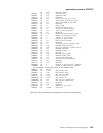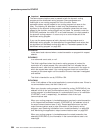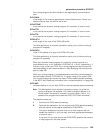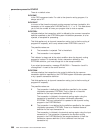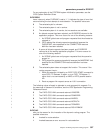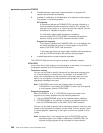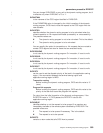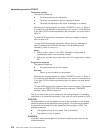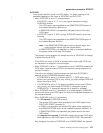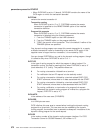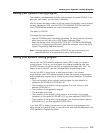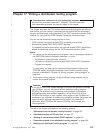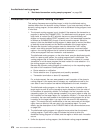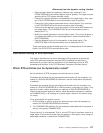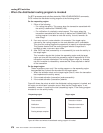DYRSYSID
is the system identifier (sysid) of a CICS region. The exact meaning of this
parameter depends on the values of DYRFUNC and DYRTYPE:
v When DYRFUNC is set to ‘0’ (route selection):
– If DYRTYPE is set to ‘0’, ‘2’, or ‘3’ (any type of transaction routing),
DYRSYSID contains:
- The CICS region name specified on the REMOTESYSTEM option of
the installed transaction definition, or,
- If REMOTESYSTEM is not specified, the system name of the local
CICS region.
– If DYRTYPE is set to ‘4’ (DPL routing), DYRSYSID contains one of the
following:
- The CICS region name specified on the REMOTESYSTEM option of
the installed program definition.
Note: If the REMOTESYSTEM option names a remote region, the
routing program cannot route the request locally.
- If REMOTESYSTEM is not specified, or there is no program definition,
the system name of the local CICS region.
The dynamic routing program can accept the value of DYRSYSID or change
it before returning to CICS.
If the SYSID you return to CICS is the same as the local sysid, CICS runs
the transaction or program in the local region.
v When DYRFUNC is set to ‘1’ (route selection error), DYRSYSID contains the
CICS region name returned to CICS by the dynamic routing program on its
previous invocation.
The action your dynamic routing program can take when DYRFUNC=1
depends on the DYRERROR parameter setting:
– If DYRERROR is set to ‘0’ (unknown sysid) or ‘1’ (CICS region not in
service) and you want CICS to retry routing, you must change DYRSYSID
before returning to CICS.
– If DYRERROR is set to ‘2’ (no session available) and you want CICS to
retry routing, you must change DYRSYSID or change the value of
DYRQUEUE to ‘Y’ (queue the request until a session is available).
v When DYRFUNC is set to ‘2’ (termination of a routed request), DYRSYSID
contains the name of the CICS region on which the completed transaction or
link request executed.
v When DYRFUNC is set to ‘3’ (notification):
– For ATI requests, DYRSYSID contains:
- The remote CICS region name specified on the SYSID option of the
EXEC CICS START command, or
- If SYSID is not specified, the remote CICS region name specified on
the REMOTESYSTEM option of the installed transaction definition, or
- If REMOTESYSTEM is not specified, the system name of the local
CICS region.
– For program-link requests, DYRSYSID contains the remote CICS region
name specified on the SYSID option of the EXEC CICS LINK command.
Any changes to the value of DYRSYSID, or to DYRNETNAME, are ignored.
parameters passed to DFHDYP
Chapter 16. Writing a dynamic routing program 571
|
|
|
|
|
|
|
|



